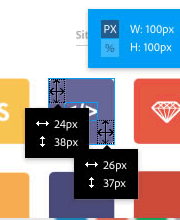Keep up to date on current trends and technologies
Mobile - Responsive Web Design

How to Simulate Mobile Devices with Device Mode in Chrome
Craig Buckler

How to Test Responsive Web Design Cross-Browser Compatibility
Craig Buckler

How to Build a Responsive Bootstrap Website
Syed Fazle Rahman

Understanding Bootstrap Modals
Syed Fazle Rahman
Working with the Facebook API in a Cordova App
Wern Ancheta
Responsive Solutions for Feature Comparison Tables
Adrian Sandu
Improving Responsive Web Design With RESS
Craig Buckler
Creating a Location Sharing App Using the Ionic Framework
Jay Raj
Understanding the Mobile User
Richa Jain
Video: Scalable Backgrounds in CSS
Russ Weakley
An Introduction to Mobile-First Media Queries
Chris Poteet
Creating a Bucket List with the Ionic Framework and Firebase
Jay Raj
Responsive Data Tables: A Comprehensive List of Solutions
George Martsoukos
Device Detection for Apps with WURFL.js
Donald Dragoti
7 Best Practices for Designing a Mobile User Experience
Richa Jain
Prototyping for Android with Material Design
Elio Qoshi
Debugging Mobile Websites with Firefox
Jérémy Heleine
Media Queries: Width vs. Device Width
Ryan Reese
Improving Responsive Images with the Picture Element
Annarita Tranfici
5 Golden Rules For Mobile Email Design
Massimo Cassandro
Do You Really Need an App for That?
Paul Boag
How to Decide Your Mobile Web Strategy
Richa Jain

Dreamweaver CC: The Web Development Tool That Opens PSDs?
Alex Walker
Better Responsive Website Testing in Google Chrome
Matthew Setter

Generating Responsive Image Assets with Photoshop CC 2014
Alex Walker
A Box of Tricks for Building Responsive Email
Massimo Cassandro
12 Essential Responsive Design Tools
Richa Jain
5 Examples of Patterns for Mobile Navigation Menus
Annarita Tranfici
Responsive Web Design Tips from Bootstrap’s CSS
Syed Fazle Rahman
How to Improve Page Performance with a Font Loader
Craig Buckler
How to Optimize Your Website for Wearable Devices
Amit Diwan
5 Uses for Vertical Media Queries
Craig Buckler
Showing 32 of 60